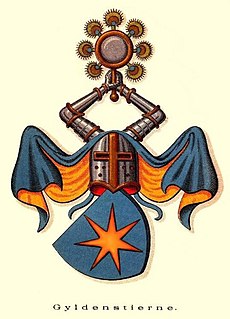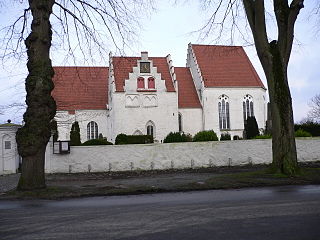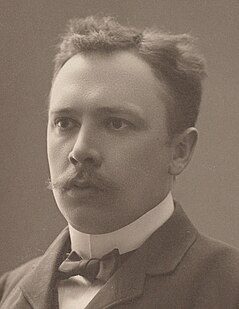Related Research Articles

Olof Skötkonung, sometimes stylized as Olaf the Swede, was King of Sweden, son of Eric the Victorious and, according to Icelandic sources, Sigrid the Haughty. He succeeded his father in c. 995. He stands at the threshold of recorded history, since he is the first Swedish ruler about whom there is substantial knowledge. He is regarded as the first king known to have ruled both the Swedes and the Geats. In Sweden, the reign of king Olov Skötkonung is considered to be the transition from the Viking age to the Middle Ages, because he was the first Christian king of the Swedes, who were the last to adopt Christianity in Scandinavia. He is associated with a growing influence of the church in what is today southwestern and central Sweden. Norse beliefs persisted in parts of Sweden until the 12th century.

Magnus Haakonsson was King of Norway from 1263 to 1280. One of his greatest achievements was the modernisation and nationalisation of the Norwegian law-code, after which he is known as Magnus the Law-mender. He was the first Norwegian monarch known to have used an ordinal number, although originally counting himself as "IV".

Eric IX, also called Eric the Holy, Saint Eric, and Eric the Lawgiver, was a Swedish king in the 12th century, c. 1156–1160. The Roman Martyrology of the Catholic Church names him as a saint memorialized on 18 May. He was the founder of the House of Eric, which ruled Sweden with interruptions from c. 1156 to 1250.

Sverker II or Sverker the Younger was King of Sweden from 1195 or 1196 to 1208 when he was defeated in the Battle of Lena by Prince Eric. Sverker died in the 1210 Battle of Gestilren where his forces battled those of King Eric X.
Eric Anundsson or Eymundsson was a semi-legendary Swedish king who supposedly ruled during the 9th century. The Norse sagas describe him as successful in extending his realm over the Baltic Sea, but unsuccessful in his attempts of westward expansion. There is no near-contemporary evidence for his existence, the sources for his reign dating from the 13th and 14th centuries. These sources, Icelandic sagas, are generally not considered reliable sources for the periods and events they describe.
Emund the Old or Edmund was King of Sweden from c. 1050 to c. 1060. His short reign was characterised by disputes with the Archbishopric of Bremen over church policies, and a historically debated delimitation of the Swedish-Danish border.

Sigurd Snake-in-the-eye or Sigurd Áslaugsson was a semi-legendary Viking warrior and Danish king active from the mid to late 9th century. According to multiple Saga sources and Scandinavian histories from the 12th century and later, he is one of the sons of the legendary Viking Ragnar Lodbrok and Áslaug. His historical prototype might have been the Danish King Sigfred who ruled briefly in the 870s. Norwegian king's genealogies of the Middle Ages names him as an ancestor of Harald Fairhair and used his mother's supposed ancestry the Völsung to create an ancestry between Harald and his descendants and Odin.

Peter Andreas Munch, usually known as P. A. Munch, was a Norwegian historian, known for his work on the medieval history of Norway. Munch's scholarship included Norwegian archaeology, geography, ethnography, linguistics, and jurisprudence. He was also noted for his Norse legendary saga translations.

The Battle of Lena occurred on January 31, 1208, and probably took place near Kungslena, which is located in the Tidaholm Municipality in Västergötland, Sweden. It was an important battle between the Danish-backed King Sverker II of Sweden and Prince Eric. Eric's forces imposed a crushing victory; however in July 1210, Sverker returned with a second army and was killed in the Battle of Gestilren.
Håkon the Crazy was a Norwegian earl and Birkebeiner chieftain during the civil war era in Norway. Håkon Galen was born no later than the 1170s and died in 1214. His epithet "the crazy" or "the mad" can also be translated as frenzied, furious or frantic and probably refers to ferociousness in battle.
Christina of Denmark, was Queen of Sweden as the wife of King Eric "IX", and the mother of King Canute I of Sweden.

Catherine was a Swedish princess, daughter of King Eric the Saint and his queen, Christina of Sweden.

Horik I or Hårik was a king of the Danes. He was co-ruler from 813, and sole king from c. 828 until his violent death in 854. His long and eventful reign was marked by Danish raids on the Carolingian Empire of Louis the Pious, son and successor of Charlemagne.
Cecilia Johansdotter of Sweden is the possible name of the wife of King Canute I of Sweden and mother of King Eric X of Sweden. Little is known about her except that she was of aristocratic origins and died sometime after 1193.
Gyda Anundsdotter of Sweden, also known as Guda and Gunhild, was a medieval and Viking Age Swedish princess and Danish queen consort, spouse of King Sweyn II of Denmark.

Gyldenstjerne, also spelled Gyldenstierne and in Swedish Gyllenstierna, is a Danish, Norwegian, and Swedish noble family divided into various branches and ranks. It is one of the oldest noble families in Scandinavia. The family surname appears, in the form of Guildenstern, in William Shakespeare's tragedy The Tragedy of Hamlet, Prince of Denmark. The surname should not be confused with Gyldensteen, the name of another short-lived Danish noble family, first recorded in 1717 and which became extinct in 1749.
Kristina Nilsdotter (Blake), was a Swedish noblewoman. Kristina and her spouse were portrayed by Snorre Sturlasson who visited them in 1219, and who reportedly gave him valuable information for his writings.
The murder of Eric V of Denmark in Finderup in 1286, had political consequences for the Danish nobles who had been in opposition. Several had powerful enemies, and wished to use the opportunity to punish them. As a result, they fled to Norway where the king ensured their protection. At the same time a costly arbitration was concluded between the Norwegian National Board and German merchants. The Kingdom of Norway (872–1397) had a desire for territorial expansion southwards. Three years later, the Danish-Norwegian war began to be termed the war of the outlaw, one of the many places that the Leidgang fleet attacked was Copenhagen.

The battle of Skanör was a battle during the War of the Outlaws on 9 July 1289.

Knut Martin Stjerna was a Swedish archaeologist and scholar, notable for a number of papers analyzing Beowulf from an archaeological perspective. He was a lecturer at Uppsala University, where he taught, among others, Birger Nerman and Sune Lindqvist.